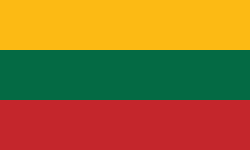Šilalė
 |
 |
The town is part of the Samogitian ethnographic region of Lithuania and was first mentioned in the sixteenth century. Its name derives from the generic word sila ("Pinewood") and Samogitian suffix -alė.
In July 1941, 135 Jewish men from Šilalė were shot on a site in the Jewish cemetery. In September 1941, the Jewish women and children of Šilalė were shot in the Tūbinės forest. Around 1,300 Jews were massacred by an Einsatzgruppen of Germans and local Lithuanian collaborators.
Map - Šilalė
Map
Country - Lithuanian_Soviet_Socialist_Republic_(1918–1919)
 |
 |
| Flag of Lithuania | |
Germany had lost World War I and signed the Compiègne Armistice on 11 November 1918. Its military forces then started retreating from the former Ober Ost territories. Two days later, the government of the Soviet Russia renounced the Treaty of Brest-Litovsk, which had assured Lithuania's independence. Soviet forces then launched a westward offensive against Estonia, Latvia, Lithuania, Poland and Ukraine in an effort to spread the global proletarian revolution and replace national independence movements with Soviet republics. Their forces followed retreating German troops and reached Lithuania by the end of December 1918.
Currency / Language
| ISO | Currency | Symbol | Significant figures |
|---|---|---|---|
| EUR | Euro | € | 2 |
| ISO | Language |
|---|---|
| LT | Lithuanian language |
| PL | Polish language |
| RU | Russian language |















